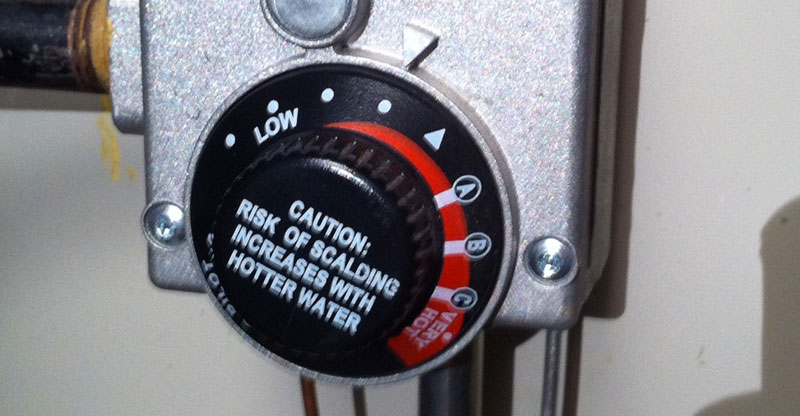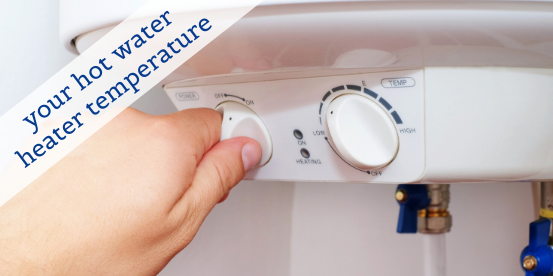Have you ever wondered why your shower feels lukewarm despite cranking the knob all the way to hot? Or perhaps you’ve experienced the scalding surprise of water that’s simply too hot to handle.
The average hot water heater temperature might just be the culprit behind these everyday inconveniences. Understanding the right temperature for your water heater is crucial—not just for comfort but also for safety and energy efficiency. By optimizing this setting, you can enjoy the perfect shower, keep your family safe, and even save a few dollars on your energy bill.
Dive into this article to discover how a simple adjustment can transform your home’s hot water experience.
Page Contents
Importance Of Hot Water Heater Temperature
Setting the right temperature for your hot water heater is vital. Warm water is necessary for cleaning and comfort. Too hot can burn. Too cold is not useful. The ideal temperature is around 120°F. This temperature is safe and efficient. It helps save energy and money. Lower temperatures can prevent scalding accidents. It also reduces bacteria growth. Adjusting the temperature is easy. Check your heater’s manual for instructions. Ensure family safety with the correct setting.
Regular checks of your heater are important. They prevent malfunctions. A faulty heater can be dangerous. Ensure your heater works well. It should heat water safely and efficiently. This keeps your home comfortable and safe.
Standard Temperature Settings
Hot water heaters usually have a standard temperature setting. This is often around 120 degrees Fahrenheit. This temperature is safe for most people. It helps to prevent scalding and bacteria growth. Some heaters have a high setting. This might be around 140 degrees Fahrenheit. This setting is hotter and can be dangerous. Older homes might have different settings. Families with young children should be extra careful. It’s important to check your heater settings. Make sure they are safe for everyone. Lower temperatures can save energy and money. Always read your heater’s manual for specific instructions. Each model might be a bit different. Safety should always come first when setting temperatures.
Factors Affecting Temperature Settings
More people in a home need more hot water. Big families use more water. Small families use less. Adjust settings based on how many people are at home. Everyone wants enough hot water. It’s important.
Lower temperatures save energy. Less heat means less power. Energy-efficient settings cut costs. They are good for the planet. High temperatures use more energy. They cost more money.
Very hot water can be dangerous. It can burn skin. Safe temperature settings protect people. Children and older adults are at risk. Keep water warm, not too hot. Safety is important for everyone.

Credit: www.greensafaris.com
Recommended Temperature Range
Hot water heatershave a safe temperature range. Usually between 120°F and 140°F. This range keeps water warm but not too hot. It helps save energy. Lower temperatures save more energy. But too low can grow bacteria. Be careful with very hot water. It can cause burns.
Setting the right temperature is important. Water should feel warm. But not burn your skin. Kids and older people need extra care. Their skin is more sensitive. Always check water temperature with your hand. Make sure it’s safe and comfortable.
Families with kids might choose 120°F. This setting is safer. For dishwashing, 140°F works better. It cleans dishes well. In winter, some prefer hotter water. It feels good on cold days. Adjust settings based on the season.
Adjusting Temperature Settings
Changing the temperature on your water heater is easy. First, find the thermostat on the heater. Turn the dial to the desired temperature. Most experts recommend setting it to 120 degrees Fahrenheit. This saves energy and prevents burns.
| Tool | Purpose |
|---|---|
| Screwdriver | Open the thermostat cover |
| Thermometer | Check water temperature |
Always turn off the power before adjusting settings. This prevents electric shocks. Wear protective gloves to avoid burns. Do not set the temperature too high. High settings can cause severe burns.

Credit: www.gopreferred.com
Benefits Of Correct Temperature Settings
Setting the water heater correctly can save energy. Less energy means lower bills. Temperature control helps in reducing waste. This is good for the environment. A small change can make a big difference.
A correct setting helps the heater last longer. Less stress on the heater parts. It works smoothly without overworking. This means fewer repairs. Proper care can extend its life by years.
Right temperature brings comfort at home. Water is warm but not too hot. Safe for kids and adults. Enjoy showers without worry. Hot enough for cleaning but safe for skin. Everyone stays happy.
Common Mistakes To Avoid
Setting the water heater too high can cause burns. Too low, and you risk bacteria growth. Regularly check and adjust the temperature to ensure safety and efficiency in your home.
Ignoring Manufacturer Guidelines
Many people ignore the manufacturer guidelines Setting water too hot is risky. It can cause burns. Hot water can damage pipes. Overheated heaters might use more energy. This increases your bills. Keep water temperature safe. Check it often. Avoid setting water above 120°F. Water too cold is not good. It might not kill germs. Cold water can make showers uncomfortable. Clothes might not clean well. Heaters set too low might not work right. Adjust temperature if water feels too cold. Aim for 120°F for safe use.Overheating Risks
Underheating Issues

Credit: blog.totalhomesupply.com
Troubleshooting Temperature Problems
Setting the right temperature for your hot water heater is crucial for comfort and safety. The average recommended setting is 120°F. This helps prevent scalding while ensuring energy efficiency.
Identifying Malfunctions
Hot water heaters can sometimes have temperature issues. It is important to check the thermostat. A faulty thermostat can cause inconsistent temperatures. Sediment buildup in the tank is another common problem. This can affect water heatlevels. Listen for strange noises; they may signal a problem. Keep an eye on leaks or rust. These can lead to malfunctions.
Professional Help Vs Diy Solutions
Deciding between hiring a professionalor doing it yourself is crucial. Professionals have the tools and knowledge. They can quickly identify problems. DIY solutions are cost-effectivefor simple fixes. But they require time and effort. For complex issues, professionals offer expert advice. Safety is a priority when handling electrical parts. Always consider your skill levelbefore attempting repairs.
Conclusion
Choosing the right water heater temperature is crucial. It impacts energy efficiency and safety. Most experts suggest 120°F for optimal balance. This temperature helps save energy costs. It also reduces the risk of scalding. Always check your heater settings regularly.
Adjust as needed for personal comfort. A little attention can lead to big savings. And enhanced safety for your family. So, keep an eye on your water heater. It’s worth the effort. Your home’s energy efficiency depends on it. Stay informed and make wise choices.
Your wallet and safety will thank you.
